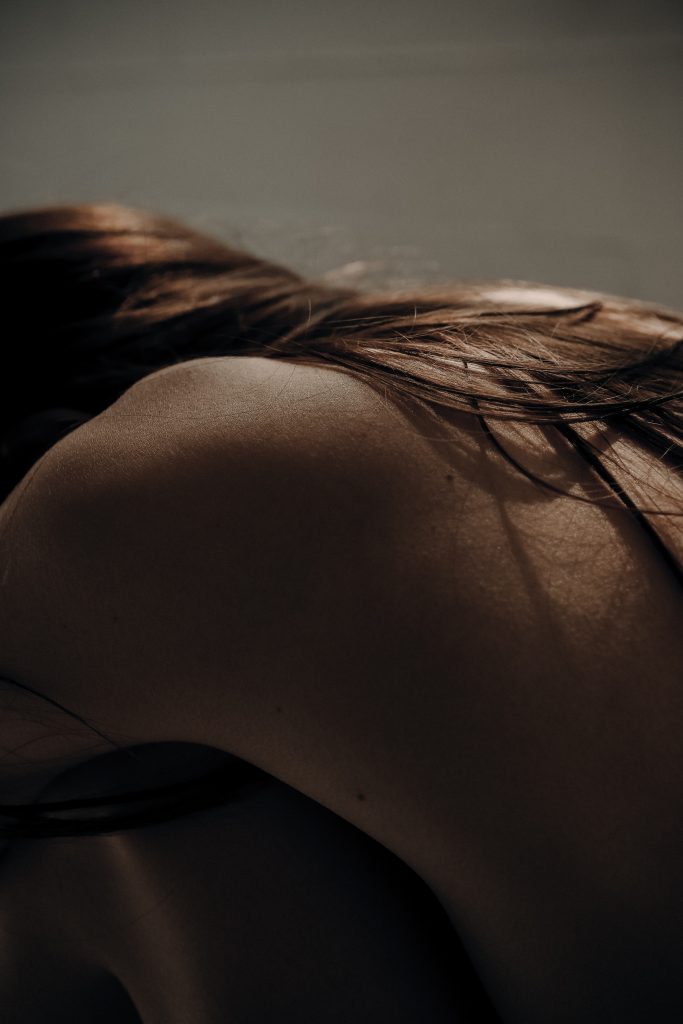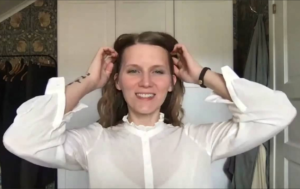
As creatives, the body is our tool. It’s the vessel through which our work is expressed. If we don’t feel safe inhabiting our bodies, we can’t express ourselves fully. This is true for every creative expression, including those that might not seem to involve the body.
For a long time, I thought a sharp intellect, a diverse vocabulary and a bit of wit was enough to make a good writer. I wrote from my head. What I didn’t realise was that it made my writing abstract. It was smooth and elegant enough, but it never really burnt.
If I want to write something that burns, my gut needs to be involved. I know that now. My breathing needs to be involved, my heart and my hips, the little hairs on the back of my neck. If someone else is going to feel my words in their bodies, my writing needs to come from my body. I need to get in there and write about the grit, the gut, the blood and the breath – the human story, in all its beauty and horror.
Creating like that will cost a lot more than simply learning how to string together elegant sentences. We need fuel to be able to sustain this kind of creation process, and the fuel needs to be as raw and real as our creations. I think Regena Thomashauer is right when she says “pleasure is what fuels our ability to create and generate”.
Pleasure may sound sweet enough but it comes with heavy baggage. In the Christian tradition a woman’s pleasure has been demonised for millennia, and variations of this theme can be found in most major religions. The blame for men’s unacceptable or “sinful” behaviour has conveniently been placed outside of themselves, on the woman. “She tempted me”. Her sinful body is the root of all evil.

The female body and sexuality must be contained and controlled in order to safeguard the paternal lineage – to make sure a man’s child is his own. This control is the foundation of a patriarchal culture and it is still woven into the fabric of modern western society.
We see it in the way a girl’s behaviour and dress is still considered a valid excuse for men’s intrusive and violent behaviour. How sexually-active young women are sluts while their male counterparts are studs. How rape is criminal on paper, but goes unpunished in an overwhelming majority of cases.
This controlling, shaming and blaming have been internalised in the individual and collective female psyche. We learn to distrust and hide our bodies and our sexuality. A certain kind of sexiness is desired and accepted in a woman, but it has more to do with being objects of male desire than sexual beings in our own right. If we embrace pleasure on our own terms we expose ourselves to judgement and sometimes to danger. So we learn to keep ourselves on a tight leash, ignoring our natural impulses and repressing our energy. In the process, we’re cut off from our most powerful source of pleasure.
This is not a theoretical problem. In order to have full access to our creative expression, we need to have full access to our bodies; they need to be safe for us to inhabit. Right now, they are not.
Most women have experienced some level of sexual trauma in their lives. Statistics say one in three, but for every reported case there are legions of silent victims.
Even if you haven’t been subject to actual sexual violence, you have still grown up in a world where women’s bodies are objectified, commented on and criticised relentlessly, in media, in advertising, in the schoolyard, on the beach and in the streets. You have grown up in diet-culture, where the size and shape of your body determines your worth. You have grown up in a world where women are made invisible as they age and change. If you made it through all of this with the connection to your physical self intact you are one in a million. Most of us have been severely bruised, if not crippled.

Sensual and sexual energy is strong. Pleasure is powerful fuel, if used consciously, and we have been denied that fuel for far too long. Reclaiming it is crucial for us as creative beings. And reclaiming it might look like wildness, like dancing naked under the full moon, like throwing ourselves into unapologetic sexual explorations.
But it might also look like taking tiny, gentle steps. Working to heal a hyperactive nervous system. Learning to recognise when shame is triggered and finding tools to deal with it. Practising being present as we eat, actually tasting the food in our mouth. Learning to notice the way the breeze feels on bare skin, the way water envelopes the whole body when we swim. Finding out who we are as sexual beings, alone with ourselves, beyond the idea of the sexy woman.
This is the deep work of the creative woman. It’s the descent from the safe, abstract realms of the mind into the body again, into the belly and the pelvis and the genitals and the feet. We don’t want to go there because it is where the hurt resides. In our bodies, we carry the individual and collective memories; we carry the shadows, the emotions, the self-hate, the intergenerational trauma, the scars; the long, bloody trails of misogynistic, patriarchal history.
The body is the keeper of all our stories. But it’s also where our strength and power is. The body is “the seat of pleasure, purpose and direction”, says Bessel van der Kolk, M.D. We need to stand firmly, feet on the ground, if we are to do our work in this world. We need to root down into our own bodies, our own fertile soil, claim our right to our own pleasure and speak with authority about our own experience. Speak the truth, even when it doesn’t look like the truth we have been told.
How do we do that? As far as I know, there are no shortcuts available. But I have one useful question for you: What do you need to feel safe enough to move forward right now? Answer it truthfully, and you’ll know enough to get started.









